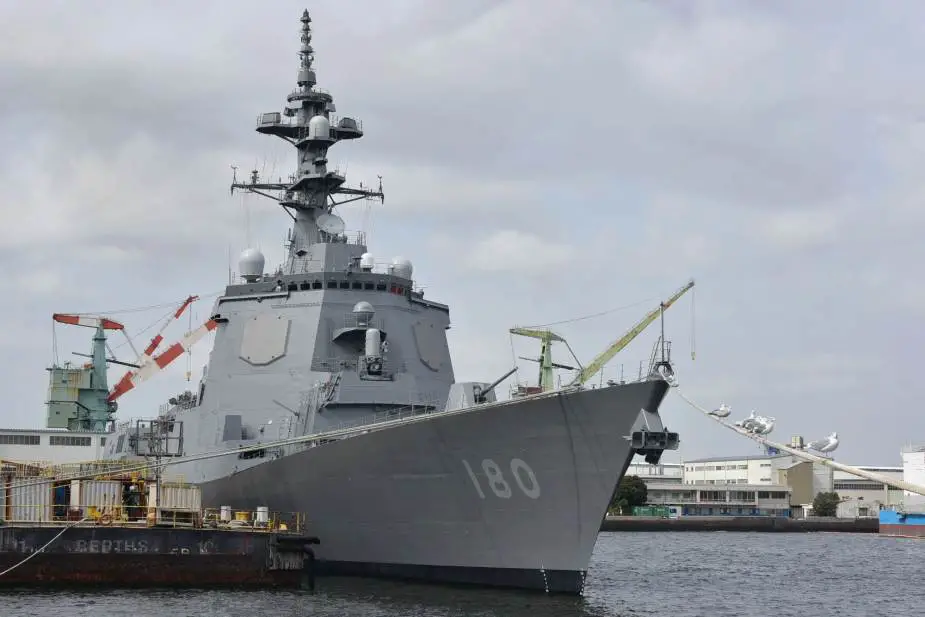Japan appears to be planning to remodel its existing surface-to-air guided missiles to make them capable of intercepting hypersonic glide weapons. The choice seems to have been made in light of growing concerns regarding China’s and Russia’s ability to produce hypersonic weapons.
According to Kyodo news, Tokyo aims to mass produce the remodeled Type-03 Medium-Range Surface-to-Air Missile used by the Ground Self-Defense Force by fiscal 2029.
But, the country first needs to update the launch software of these missiles by fiscal 2026. The National Security Strategy, a long-term policy directive anticipated to be updated by the end of this year, will mention remodeling the missile interceptors.
The report said that the move is part of an effort to boost “comprehensive air and missile defense” capability. A senior official of the Self-Defense Forces told the media outlet that intercepting hypersonic glide weapons would be challenging with Japan’s current missile defense capability.
The hypersonic glide weapons are designed to travel at Mach 5 on unpredictable trajectories, and conventional air defense systems cannot intercept them.
The planned remodeling would increase the ability of Type-03 missiles to estimate the flight path of hypersonic weapons, track them, and detect them by radar.

Meanwhile, it was recently reported that the country is also preparing to increase the range of a high-speed missile, currently in a developmental phase, to reach the Senkaku Islands and parts of China and North Korea.
The long-range, land-based missile was developed in 2018. The current prototypes have a range of several hundred kilometers, reported Kyodo News on October 30.
Security analysts believe the region’s growing challenges necessitate longer-range missile capabilities. The announcement of the potential upgrade comes as regional tensions are rising.
The Senkaku chain, located around 105 miles northeast of Taiwan and 280 miles west of Okinawa, is still a point of contention between Japan and China.
Coastguard vessels from China and Japan frequently engage in territorial conflicts in the Senkaku Islands, also known as Diaoyu Dao in China.
Furthermore, Japan has also been alarmed by Chinese threats to annex Taiwan and North Korea’s ongoing missile launches forcibly.
Current Air Defense Capabilities Of Japan
The task of intercepting approaching missiles in the outer atmosphere is designated to Maritime Self-Defense Force Aegis destroyers carrying Standard Missile-3 interceptors.
If they cannot stop them, the attack will be countered in the lower tier by the Air Self-Defense Force’s ground-based Patriot Advanced Capability-3 interceptors.
Japan plans to add two more Aegis-equipped warships to its fleet of eight Aegis destroyers. However, there are reservations in Japan concerning the expense and manpower required.
That being said, Type-03 Medium-Range Surface-to-Air Missile (SAM-4 or Chu-SAM) is also a crucial component of Japan’s defense system. The Japan Ground Self-Defense Force acquired the Type-03 missiles in 2003 to intercept aircraft. These missiles have a firing range of tens of kilometers.

The missiles underwent their initial redesign in 2017 to combat cruise missiles flying at low altitudes and fast-approaching projectiles. The heavy crane truck from the Kato Works Ltd./Mitsubishi Heavy Industries NK series is the basis for the SAM’s vehicle chassis.
It employs a cutting-edge active electronically scanned array radar. The system can intercept fighter planes, helicopters, and cruise missiles and simultaneously track up to 100 targets.
The nation frequently deploys Type-03 to deter the Chinese military in the region. In November 2021, an Okinawa Prefecture-based Okinawa Times reported that the Japan Self Defense Force (JSDF) garrison at Miyakojima (Miyako Island) installed a Type 03 air defense missile system.
The Miyako Strait, which separates the Japanese islands of Miyako and Okinawa, provides a narrow air and maritime route across Japan’s exclusive economic zone.
Chinese military planners consider the Miyako Strait and the Bashi Channel two crucial chokepoints in the first island chain. Such passages worsen bilateral relations by putting Japan on high alert over concerns about its territory being cut off.
Nevertheless, whether the modified missiles will enable Japan to defend against hypersonic weapons is yet to be seen.
- Contact the author at ashishmichel@gmail.com
- Follow EurAsian Times on Google News




